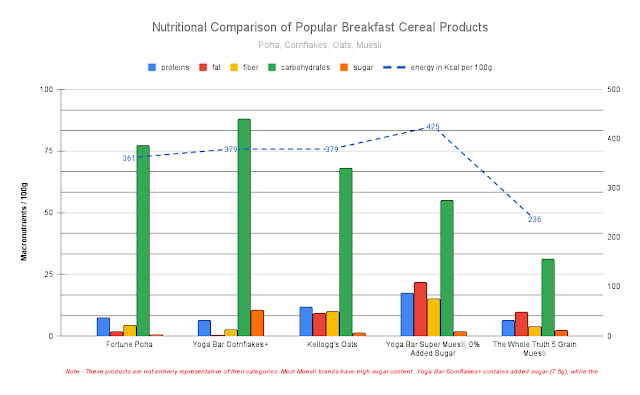Unwrapping India's Bread: A Nutritional Analysis 🍞
During a recent deep dive into Breads category of the India database of Open Food Facts - the 'Wikipedia of food', I analyzed 47 products (with known nutrition facts as of February 23, 2024). 44 of these products received a Nova Group grading of 4, indicating Ultra-Processed Food (UPF) status, the red alert for unhealthy choices! 32 of these breads show Palm oil as an ingredient on the packaging. Most of the remaining cloak themselves in the vague term 'Edible Vegetable Oil'.
The data, which has been obtained from Open Food Facts and subsequently cleaned up, is available on GitHub in CSV format.
To make it easier to slice and dice the data, view the above data on Github with the Flat Viewer tool:
Average nutrition facts for the 47 products:
| Nutrition facts | per 100 g / 100 ml |
|---|---|
| Energy | 274.52 kcal |
| Fat | 2.98 g |
| Saturated fat | 1.33 g |
| Carbohydrates | 54.31 g |
| Sugars | 5.92 g |
| Added sugars | 4.89 g |
| Fiber | 3.05 g |
| Proteins | 7.51 g |
| Salt | 0.99 g |
Observations:
Key nutrients like fiber, saturated fat, and salt are sometimes missing from bread labels, making it hard to conduct an objective analysis.
The packaging doesn't often show the manufacturing & expiry dates. Instead, the Use by date is displayed, making shelf life unclear. Based on personal experience, the typical shelf life of different brands can vary between 5-10 days.
In the past, packaged food, like bread, came in standard sizes, making it easy to compare prices. However, nowadays, the weight of packaged bread can vary significantly, ranging from 50 to 800 grams. This variability makes it challenging to compare prices because the quantity cannot be determined from the product dimensions alone. While 400-gram packages are common, the wide variation means you need to pay close attention to the weight listed on the packaging to ensure you're getting the best value for your money.
Most bread packaging is plastic, which may not be the most eco-friendly option.
When it comes to choosing bread, whole grain options made from whole wheat flour (atta) are preferable to refined wheat flour (maida). Check the content of whole wheat flour (atta) though while purchasing. Some brands labeled "100% Atta" Bread may contain 50-65% Whole Wheat/atta.
Modern & Harvest Gold brands are owned by Grupo Bimbo, a Mexican multinational food company which operates in over 33 countries.
If you're curious about how these bread nutrition details compare to those from around the world, you can check out the Breads category of the Open Food Facts database. This crowdsourced database contains nutrition information for over 32,000 bakery products from across the globe.
Note - This study relied on Open Food Facts data as of a specific date. Details presented on product packaging are subject to change over time. For the most up-to-date information, please refer to the latest data.
Also see -






Comments
Post a Comment